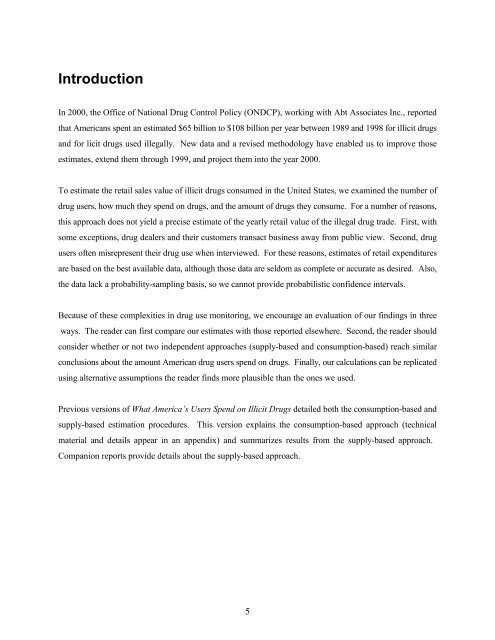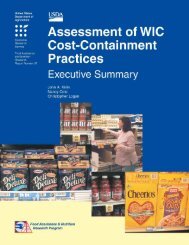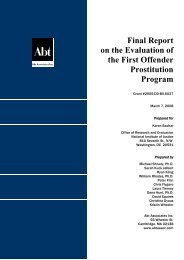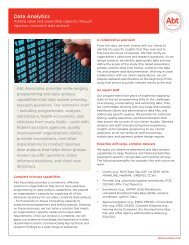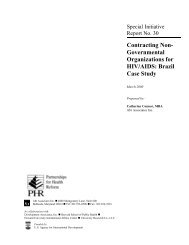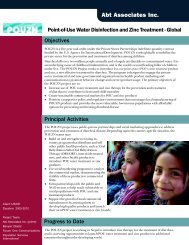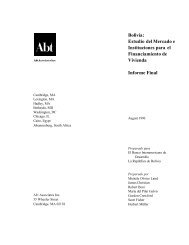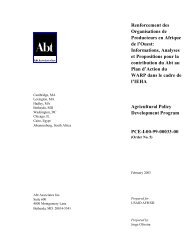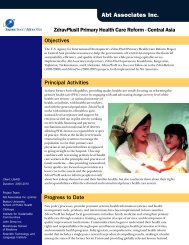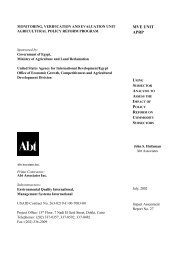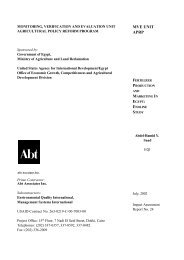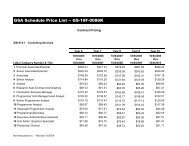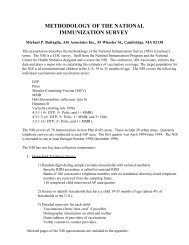What America's Users Spend on Illegal Drugs 1988-2000 - National ...
What America's Users Spend on Illegal Drugs 1988-2000 - National ...
What America's Users Spend on Illegal Drugs 1988-2000 - National ...
- No tags were found...
You also want an ePaper? Increase the reach of your titles
YUMPU automatically turns print PDFs into web optimized ePapers that Google loves.
Introducti<strong>on</strong>In <strong>2000</strong>, the Office of Nati<strong>on</strong>al Drug C<strong>on</strong>trol Policy (ONDCP), working with Abt Associates Inc., reportedthat Americans spent an estimated $65 billi<strong>on</strong> to $108 billi<strong>on</strong> per year between 1989 and 1998 for illicit drugsand for licit drugs used illegally. New data and a revised methodology have enabled us to improve thoseestimates, extend them through 1999, and project them into the year <strong>2000</strong>.To estimate the retail sales value of illicit drugs c<strong>on</strong>sumed in the United States, we examined the number ofdrug users, how much they spend <strong>on</strong> drugs, and the amount of drugs they c<strong>on</strong>sume. For a number of reas<strong>on</strong>s,this approach does not yield a precise estimate of the yearly retail value of the illegal drug trade. First, withsome excepti<strong>on</strong>s, drug dealers and their customers transact business away from public view. Sec<strong>on</strong>d, drugusers often misrepresent their drug use when interviewed. For these reas<strong>on</strong>s, estimates of retail expendituresare based <strong>on</strong> the best available data, although those data are seldom as complete or accurate as desired. Also,the data lack a probability-sampling basis, so we cannot provide probabilistic c<strong>on</strong>fidence intervals.Because of these complexities in drug use m<strong>on</strong>itoring, we encourage an evaluati<strong>on</strong> of our findings in threeways. The reader can first compare our estimates with those reported elsewhere. Sec<strong>on</strong>d, the reader shouldc<strong>on</strong>sider whether or not two independent approaches (supply-based and c<strong>on</strong>sumpti<strong>on</strong>-based) reach similarc<strong>on</strong>clusi<strong>on</strong>s about the amount American drug users spend <strong>on</strong> drugs. Finally, our calculati<strong>on</strong>s can be replicatedusing alternative assumpti<strong>on</strong>s the reader finds more plausible than the <strong>on</strong>es we used.Previous versi<strong>on</strong>s of <str<strong>on</strong>g>What</str<strong>on</strong>g> America’s <str<strong>on</strong>g>Users</str<strong>on</strong>g> <str<strong>on</strong>g>Spend</str<strong>on</strong>g> <strong>on</strong> Illicit <strong>Drugs</strong> detailed both the c<strong>on</strong>sumpti<strong>on</strong>-based andsupply-based estimati<strong>on</strong> procedures. This versi<strong>on</strong> explains the c<strong>on</strong>sumpti<strong>on</strong>-based approach (technicalmaterial and details appear in an appendix) and summarizes results from the supply-based approach.Compani<strong>on</strong> reports provide details about the supply-based approach.5


